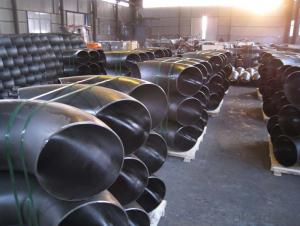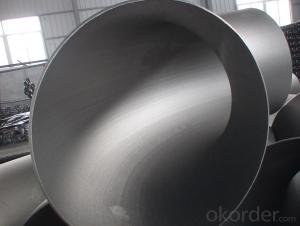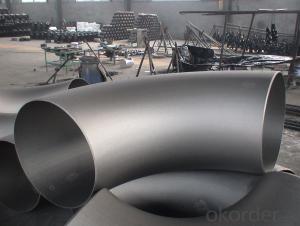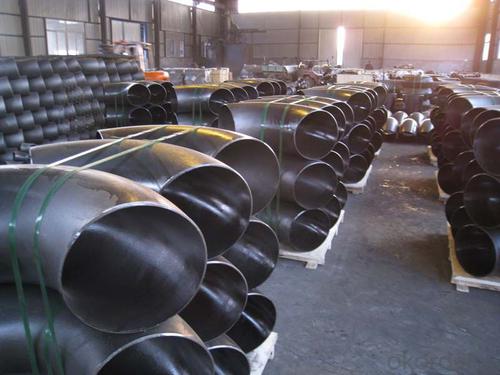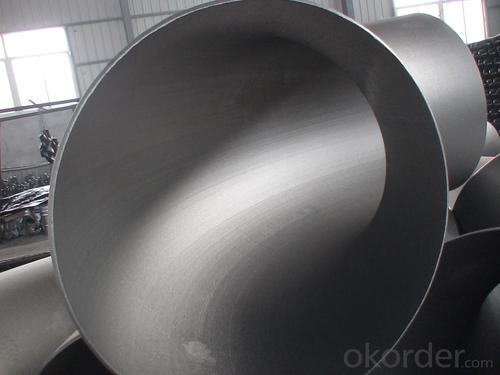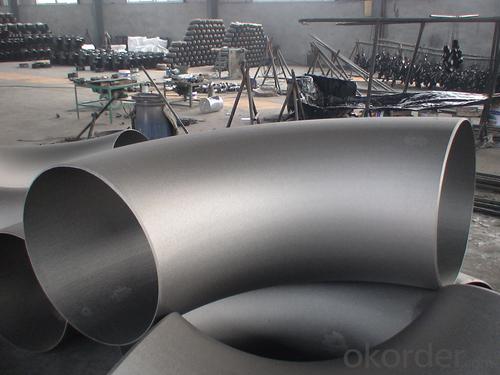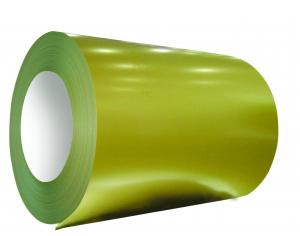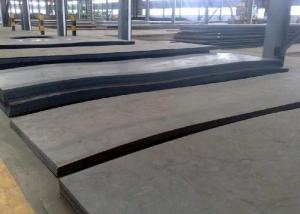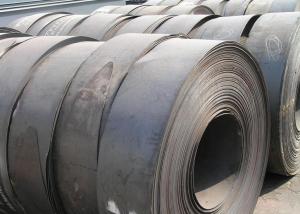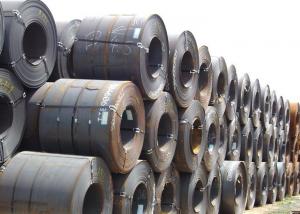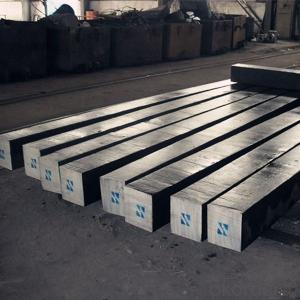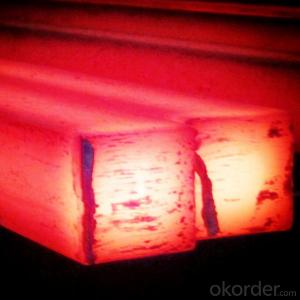Carbon steel pipe fittings BEND 1/2''-42''
- Loading Port:
- China Main Port
- Payment Terms:
- TT OR LC
- Min Order Qty:
- -
- Supply Capability:
- -
OKorder Service Pledge
OKorder Financial Service
You Might Also Like
Pipe fitting is the occupation of installing or repairing piping or tubing systems that convey liquid, gas, and occasionally solid materials. This work involves selecting and preparing pipe or tubing, joining it together by various means, and the location and repair of leaks.
Pipe fitting work is done in many different settings: HVAC, manufacturing, hydraulics, refineries, nuclear-poweredSupercarriers and Fast Attack Submarinescomputer chip fab plants, power plant construction and other steam systems. Pipe fitters (sometimes called simply "fitters") are represented in the USA and Canada by the United Association of Journeymen and Apprentices of the Plumbing and Pipe Fitting Industry of the United States and Canada.
Fitters work with a variety of pipe and tubing materials including several types of steel, copper, iron, aluminium, and plastic. Pipe fitting is not plumbing; the two are related but separate trades. Pipe fitters who specialize in fire prevention are called Sprinklerfitters, another related, but separate trade.
Materials, techniques, and usages vary from country to country as different nations have different standards to install pipe.
Elbow are an English alternative rock band consisting of Guy Garvey (vocals, guitar), Richard Jupp (drums, percussion), Craig Potter (keyboards, piano), Mark Potter (guitar, backing vocals), and Pete Turner (bass guitar, backing vocals). They have played together since 1990, adopting the Elbow band name in 1997, and have released six studio albums: Asleep in the Back (2001), Cast of Thousands (2003), Leaders of the Free World (2005), The Seldom Seen Kid (2008), Build a Rocket Boys! (2011), and The Take Off and Landing of Everything (2014). All of their studio albums, as well as B-sides compilation Dead in the Boot (2012), have placed in the top 15 of the British album chart and seven of their singles have placed in the top 40 of the British singles chart.
In 2008 Elbow won the Mercury Music Prize for their album The Seldom Seen Kid, and in 2009 they won the Brit Award for Best British Group In 2012 they released "First Steps", the BBC theme for the 2012 London Olympics
Specifications
Standard: ASTM A234 WPB, JIS, DIN, EN, GOST
Use for Oil, Gas, Subwatering act.
45/90/180 degree, LR/SR Elbow
ASTM A234 WPB ELBOW :
| ||||||||
| we are manufacturer for carbon steel pipe and fittings,like 45deg,90deg,180deg,L/R OR S/R,bend , | ||||||||
| equal or reducing tee, CON reducer, ECC reducer, pipe cap,flange. | ||||||||
| CON AND ECC REDUCER: CARBON STEEL,STAINLESS,STELL,ALLOY STEEL | ||||||||
| NOMINAL DIAMETER | BIG OD1 | SMALL OD2 | HEIGHT(MM) | |||||
| MM | SERIES A | SERIES B | SERIES A | SERIES B | 51-711 | |||
| 25*15--1500*1400 | 33.7-1524 | 32-1520 | 21.3-1420 | 18-1420 | ||||
| MATERIAL: A234WPB,A283,A105,A53,A106,API5L | ||||||||
| STANDARD: ASTM/ANSI,DIN,ISO,GB,JIS,BS ,GOST | ||||||||
| OTHERS: | ||||||||
| 1. Special design available according to requirement | ||||||||
| 2. All the production process are made under the ISO 9001:2000 strictly. | ||||||||
- Q: How are steel plates used in the fabrication of storage silos?
- Steel plates are used in the fabrication of storage silos as they provide the necessary strength and durability to withstand the weight and pressure of stored materials. These plates are shaped, welded, and bolted together to create a sturdy structure that can safely hold and store a variety of goods, such as grains, liquids, or bulk materials.
- Q: How is steel used in the production of automotive parts and components?
- Steel is a crucial material in the production of automotive parts and components due to its strength, durability, and cost-effectiveness. It is commonly used in the manufacturing of car bodies, engine components, chassis, and suspension systems. The steel is shaped and formed into various parts through processes like stamping, welding, and casting, ensuring precision and reliability. Its high tensile strength and ability to withstand extreme conditions make it an ideal choice for ensuring the safety and performance of automotive vehicles.
- Q: How is steel tubing used in manufacturing?
- Steel tubing is used in manufacturing for various applications such as structural support, conveyance of fluids and gases, and as a component in machinery and equipment. It provides strength, durability, and flexibility, making it ideal for constructing frameworks, pipelines, and automotive parts. Its versatility and wide range of sizes and shapes make it an essential material in the manufacturing industry.
- Q: How are steel forgings different from castings?
- Steel forgings and castings are two different manufacturing processes used to produce metal components. The main difference lies in the way each process shapes and forms the metal. Forgings involve the application of pressure or force to shape heated metal, resulting in a stronger and more durable product. On the other hand, castings involve pouring molten metal into a mold and allowing it to solidify, resulting in a less dense and more porous product. In summary, forgings offer superior strength and structural integrity, while castings provide more intricate and complex shapes.
- Q: How is steel wire rope strength tested?
- Steel wire rope strength is typically tested using a destructive testing method called tensile testing. This involves subjecting the wire rope to a gradually increasing tensile load until it reaches its breaking point. The maximum force applied to the wire rope during this test is then recorded as its ultimate tensile strength, which indicates the maximum load it can withstand before breaking.
- Q: What are the properties of carbon steel for industrial use?
- Carbon steel is a type of steel that primarily consists of iron and carbon, with small amounts of other elements. It possesses several properties that make it highly suitable for industrial use. Firstly, carbon steel is known for its exceptional strength and durability, making it capable of withstanding heavy loads and high temperatures. It is also highly malleable and can be easily shaped into various forms, making it versatile for different industrial applications. Additionally, carbon steel exhibits good thermal and electrical conductivity, allowing it to efficiently transfer heat and electricity. Moreover, it has excellent corrosion resistance when properly coated or treated, making it suitable for use in harsh environments. Lastly, carbon steel is relatively cost-effective and readily available, making it a popular choice in various industries such as construction, manufacturing, and transportation.
- Q: What are the applications of steel in the marine industry?
- Steel is widely used in the marine industry due to its exceptional strength, durability, and corrosion resistance properties. It is employed in the construction of ship hulls, decks, and superstructures, providing structural integrity and ensuring the vessel's longevity in harsh marine environments. Additionally, steel is utilized in the fabrication of marine equipment, such as propellers, shafts, and rudders, contributing to efficient propulsion systems and smooth navigation. Its applications in the marine industry are crucial for ensuring the safety, reliability, and performance of various maritime vessels and structures.
- Q: How does steel sheet metal welding and joining work?
- Steel sheet metal welding and joining works by using various techniques to permanently join two or more pieces of steel sheet metal together. This can be achieved through processes such as arc welding, resistance welding, or laser welding. These methods involve creating a localized heat source to melt the edges of the metal sheets, which are then fused together to form a strong and durable bond. The welding process may also involve the use of a filler material, such as a welding wire or rod, to reinforce the joint and improve its strength. Overall, steel sheet metal welding and joining is a crucial process in the fabrication of structures and products made from steel, ensuring their integrity and functionality.
- Q: What are the advantages of using steel plates in manufacturing?
- There are several advantages of using steel plates in manufacturing. Firstly, steel plates are highly durable and have a high strength-to-weight ratio, making them suitable for heavy-duty applications. Secondly, steel plates have excellent corrosion resistance, reducing the risk of rust and increasing the lifespan of the manufactured product. Additionally, steel plates can be easily fabricated and modified to meet specific design requirements, providing flexibility in manufacturing processes. Lastly, steel plates offer superior heat resistance, making them ideal for applications that involve high temperatures or thermal stress.
- Q: How do steel products contribute to the construction of sports facilities and stadiums?
- Steel products play a crucial role in the construction of sports facilities and stadiums due to their strength, durability, and versatility. From the framework and roof structure to the seating and support systems, steel is widely used in various aspects of sports facility construction. It provides the necessary structural integrity to withstand heavy loads and adverse weather conditions, ensuring the safety and longevity of these venues. Moreover, steel's flexibility allows for innovative and complex architectural designs, enabling the creation of iconic stadiums that capture the essence of sporting events.
Send your message to us
Carbon steel pipe fittings BEND 1/2''-42''
- Loading Port:
- China Main Port
- Payment Terms:
- TT OR LC
- Min Order Qty:
- -
- Supply Capability:
- -
OKorder Service Pledge
OKorder Financial Service
Similar products
Hot products
Hot Searches
Related keywords
